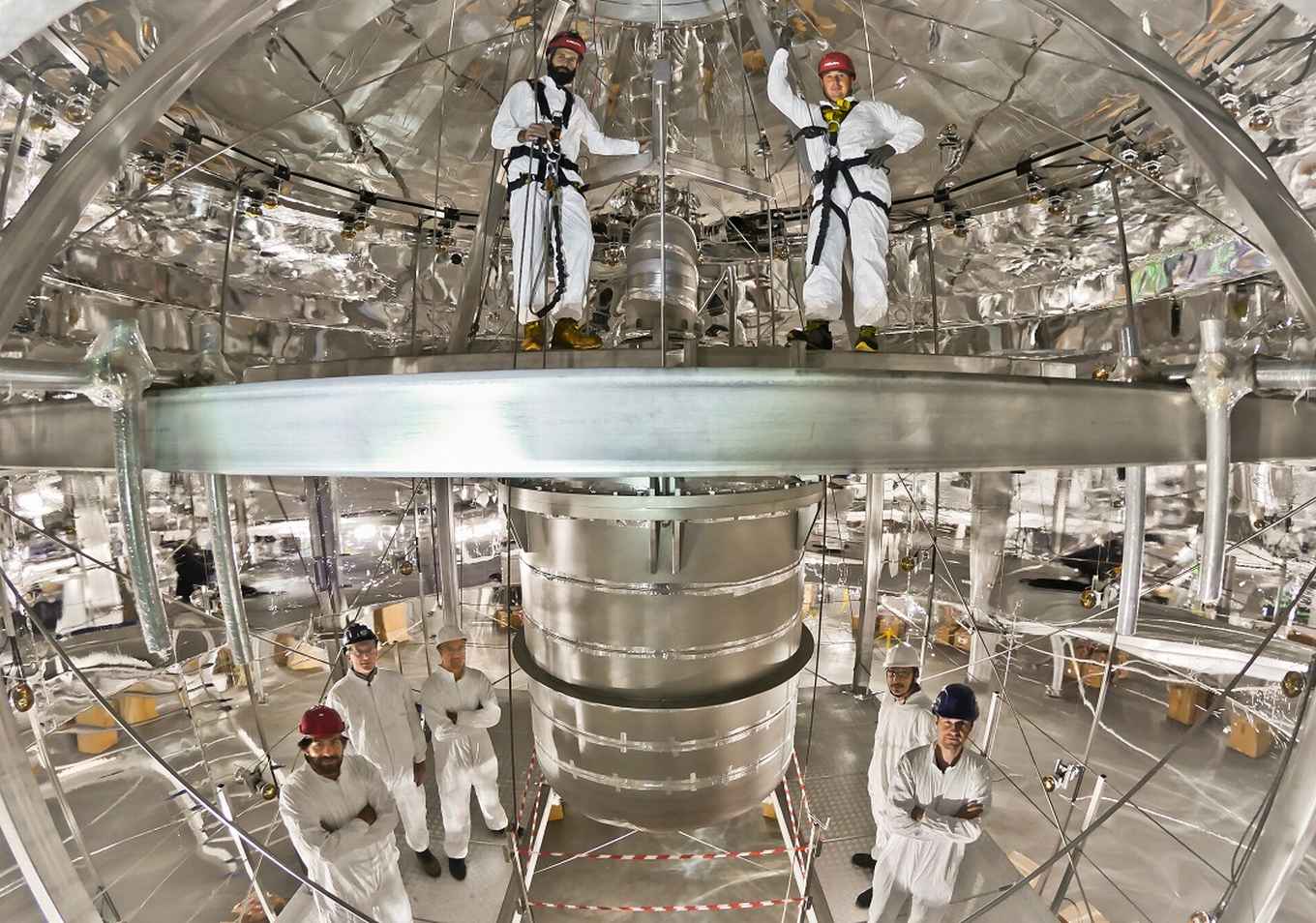Researchers Nikhef and UvA measure slowest radioactive decay ever
24 April 2019

The decay time for the effect that the XENON-researchers published in Nature today is a world record: 18 billion trillion years. This is more than a trillion times longer than the current age of the universe.
Almost stable
‘At human time scales, one would simply call this stable, but there really is a measurable decay’, says researcher Prof. Patrick Decowski (Nikhef/UvA). ‘The fact that we find a reliable value indicates the precision with which we can measure this type of effect.’
The measurements were carried out using a rare form of the element xenon: the isotope Xe-124. During the measurements, the experiment contained 3.2 tonnes of cold liquid xenon, which naturally contains some Xe-124. Researchers of the University of Münster played a leading role in the measurements.
In half a year’s worth of measurements, 126 decays were observed from this large amount of xenon. This was sufficient to accurately estimate the half-life of the decay: the amount of time in which the number of radioactive nuclei is halved.
Rare decay
In Xe-124, a process called double electron capture occurs. This is a rare form of radioactive decay in which two protons in the atom’s nucleus simultaneously capture an electron from the atom’s inner shell. In this process, the protons in the nucleus change into neutrons, resulting is an entirely new chemical element: tellurium. Two neutrinos are also produced.
Moreover, the process causes changes in the electron cloud surrounding the nucleus. When electrons from higher orbits fill the holes in the inner shell, radiation with a very specific energy is produced. This can be measured with the XENON detectors, and can be distinguished especially since this process produces a small amount of energy whereas the background radiation has a higher energy.
More than a record
Apart from setting a world record, the measurements also have a scientific importance, says Decowski. ‘The nuclear model for large nuclei such as xenon is a rather ad hoc description. With further measurements, we can improve this model.’
A better understanding of xenon is especially valuable for the XENON experiment itself. The aim of the experiment is to find double flashes of light that occur when a dark matter particle collides with a xenon nucleus. The resulting acceleration causes a flash of light, after which the electrons that are torn from the atom cause a second flash.
This double flash of light is the signature that indicates the sought-for dark matter. XENON is filled with light detectors to be able to see this effect.
Dark matter
Dark matter is one of the enigmas in modern physics. The universe, especially in galaxies, appears to contain much more mass than we can see in the form of stars. It is still unknown what this dark matter consists of. In theory it could consist of unknown particles that are not yet incorporated in the standard model of particle physics.
So far, XENON has not found any dark matter. Currently, the experiment is being upgraded to contain more than 8 tonnes of xenon. Nikhef and the UvA are involved in this upgrade, which should make the experiment ten times more sensitive.
Researcher Prof. Auke-Pieter Colijn (Nikhef/UvA) is the technical coordinator of those upgrades. ‘This result indicates that we can measure very rare events. With the upcoming XENONnT-detector, this situation will only improve’, he says.
Reference
Observation of two-neutrino double electron capture in 124Xe with XENON1T, E. Aprile et al., Nature, April 2019.
Video: A short video about the result can be found at https://youtu.be/7tI0G8_KLYo.